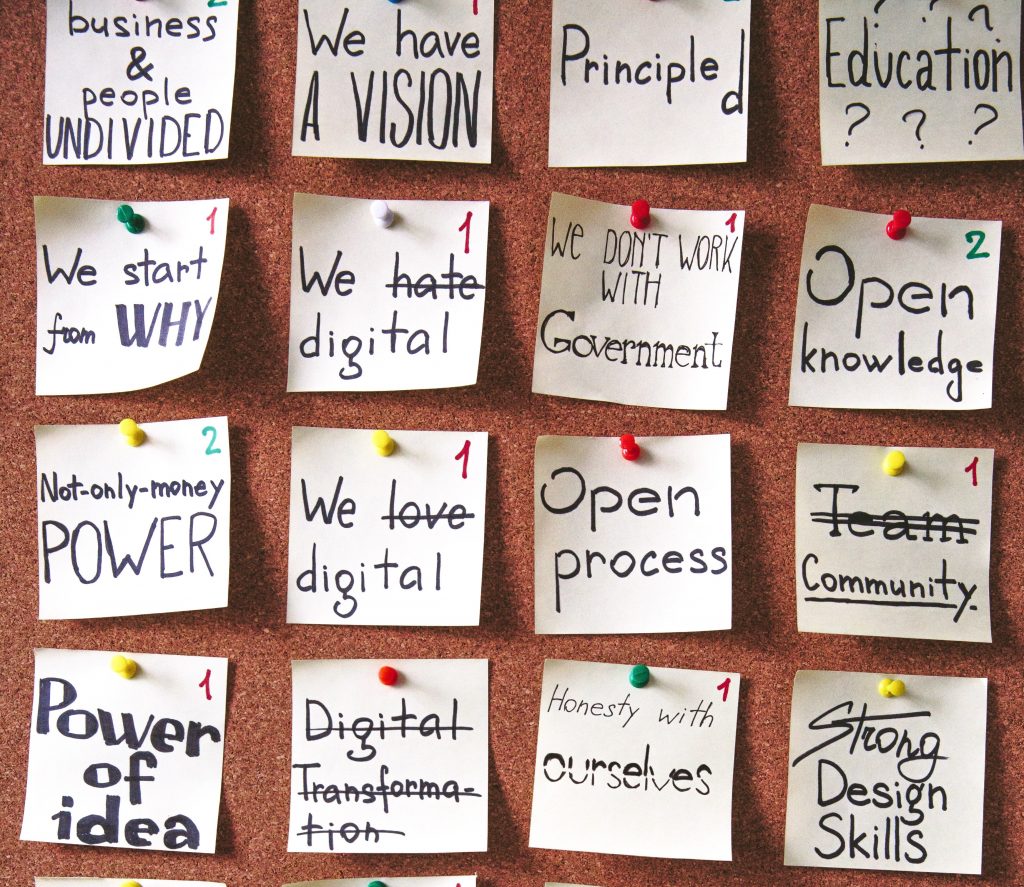Building trust – with customers, with communities, with employees – is one of the most important things you can do as a business. It’s not just a touchy-feely issue; consumers with greater trust will spend more while consumers with lower trust will spend less.
One of the most fundamental ways companies can build trust is to listen to their customers (and act on what they hear). But this can often be easier said than done. There’s SO much feedback out there, there can be a lot of aggressive negativity, sharing roadmaps feels like handing intel to your competitors, etc.
One of the best tools for building this trust while avoiding many of the concerns above is an advisory council: a private, limited group of customers who give you insight and feedback. A successful advisory council becomes the bridge between company and audience and drives true co-creation.

Advisory councils have been one of our most crucial tools for rebuilding trust at Reddit. And many of the harder decisions we’ve made have been informed by our Moderator Council. You can see that in action in the public notes we shared from our Council discussion on implementing a hate speech policy.
Today I want to outline the crucial ingredients for a successful advisory council.
A Clear Mission
If you’re not explicit about what your goals are, your audience may see the council as simply lip service – or use it in ways you didn’t expect. Craft your mission statement before you do outreach and be sure to feature it prominently both during that phase and within the council itself.
You’ll also want to explicitly define what the council is not. For us, we had to clarify a few months in that this was not a channel to escalate support issues. We didn’t want to give unfair advantage to our council members and these escalations tended to distract from the core topics. Make sure when identifying these non-topics that you carefully explain why (and what their alternative channels are) so the council doesn’t feel silenced.
Constructive Criticism
A successful council will give you the feedback you need to hear, but not feel antagonistic. If it’s too antagonistic your staff won’t want to attend, but if you just fill the council with yes-people you won’t actually get what you need.
The right people
Choosing the right people for your council is one of the most crucial steps. As with any community, your core members will define the culture and vibe of your council. We specifically looked for people who had criticized us before but tended to be civil and open to discussion. This was relatively easy for us because we do public feature announcements on our platform and get lots of feedback in the comments. If you don’t have that to pull from, you can do some introductory calls before extending a formal invite.
Sales staff, community staff, customer support staff, and your audience itself will also have great suggestions for additions. Just be careful that nobody is getting added as a way to help close a sale – you should have final say on whether you accept a nominated member.
Rules and norms
Like any community, you want to establish rules and norms within your council space. This may be fairly personal based on your company, the area your business is in, the stomach your staff have for conflict, etc. For us, a few things were important: council members needed to actually try to attend calls and get context if they were going to give criticism, to treat others like humans and avoid ad hominem attacks, and to ensure they’re not dominating the conversation.

Confidentiality
It’s very important that you’re clear with invitees up front what level of confidentiality you expect. Some members may not be comfortable keeping things private, and you don’t want to put them in a tough position. Nobody should have to guess what they can share – make it explicitly clear when something is early and confidential (i.e. don’t freak out the larger community with this half-baked idea) vs something you’d love for them to evangelize.
On the other hand, make it clear whether their participation in and/or contributions to the council will be publicly shared.
Enforcement
Rules don’t work without enforcement. It might feel especially painful to punish someone in such an intimate and important community, but if you don’t then nobody will take the rules seriously. Establish a plan for how many strikes someone gets and then apply consistently. We’ve been lucky to have to remove very few folks from the councils, but our warnings and occasional removals have been effective in showing that we’re not messing around.
Positive reinforcement
On the flip side, make sure that every time you see someone with a really great contribution you give them a shout-out. Be sure to emphasize why it’s great so others know how to emulate – call out if it was particularly insightful, or critical without being antagonistic, or whatever other norm you want to entrench.
Diverse Membership
The insights from your council will be ineffective unless it’s successfully representing a diverse group of people.
Diverse recruitment
This is an opportunity to hear from the folks who may not be the loudest voices in the room, but are still affected (sometimes, even more dramatically) by your decisions. Be sure to carefully curate people across a range of attributes, like:
- Account size
- Account age
- Location
- Race
- Identity
- Product usage
Obviously, be sure to follow all relevant laws and be transparent about any data collection or usage.
Term limits
A permanent advisory council is bad for a number of reasons:
- You don’t get a diversity of voices
- Over time, members may lose their outsider perspective
- The larger audience may not feel represented by this “cabal”
- You may discover someone isn’t a great fit but you don’t want to “fire” them
I highly recommend creating limited, pre-determined terms for your members. You can consider a one-time extension for especially fantastic members. (We also hired one of our best council members!) This gives you a nice rotating cast of people and an easy out if someone isn’t a great fit.
Internal Participation

The council will only work if you’re actually engaging with it regularly. This means that you have to drive internal participation.
Getting internal buy-in
This can be hard – internal folks may feel too busy, or may be scared of being yelled at. The best long-term solution for this is just to make sure that, per the above, council conversations are constructive. The short-term solution may be less elegant: call in favors, plop council meetings onto people’s calendars without asking, find a friendly (even if they’re not the team leader) to come present, get their bosses to pressure them, etc. Get the wheel turning and, if you’ve truly created a collaborative environment, folks will want to come back and will spread the good word.
Be sure to also be conscious about how you’re pitching the council. When pitching, this isn’t about “listening to our users” or “doing the right thing” – those aren’t the primary motivators for everyone (unfortunately). Instead, frame it in a way that aligns with the parties’ goals. For product managers it might be about making their launches more successful, for policy folks it might be about avoiding potential blowback, etc.
Hearing All Voices
If the point of a council is to hear viewpoints you might normally miss, that means being intentional about hearing those voices.
Limit call size
After about 10 council participants, a call tends to gets too messy to handle and people can’t speak up. Make sure to limit – you can always release notes from the call and have a larger asynchronous discussion after.
Wait before you try to solve
It can be easy to hear someone explain a problem or make a suggestion and immediately leap on it because you have thoughts or want to try to fix it. But that one person might not represent the group. Make time for other voices; ideally, a gap long enough it feels awkward and the most timid people can work up the courage. Actively ask “Is this how everyone feels? Are there any other perspectives?”
Raise people’s voices
If someone’s quiet that doesn’t mean they don’t have an opinion. Make sure to call on people you haven’t heard from.
Follow up after
Some people aren’t great live, and sometimes people think of new angles or better articulate their thoughts after a call. Create an asynchronous written space for his conversation.
Respect time limits
Hearing all voices does not mean going over time. Some people have hard stops and can’t attend past the end time – continuing is putting them in a tough spot and potentially excluding them. Plus, having more to talk about probably means you’ve just found some juicy topics, which is great! You can always schedule a more focused follow-up call (frankly, that may be more productive than trying to solve something in the last 10 minutes of a call) or, again, take it to an asynchronous conversation.
Theme your calls
There will always be topics that are more urgent, but not always more important (see the Eisenhower Matrix). For this reason, it’s good to have different themed calls to ensure that you touch on everything important at some point. For some constant topics you’ll want to have a recurring call; others can be ad hoc.
Act on feedback
Listening without taking action can sometimes be worse than asking in the first place. It gives the sense that a council is merely for show.
Bring things to your council early
The biggest issue we ran into is that teams would be so heads-down on work that they wouldn’t bring products to our council until they were nearly finished. This doesn’t work; even if you get some truly great and valid feedback, you don’t have time to implement it.
Set an internal goal for how early teams are to bring items to councils, measure it, and address problem teams. Be sure to remind them why this is in their best interest!
Either do it or say why not
Some feedback will be worth acting on, some won’t. Some will align with business interests, some won’t. But even if you don’t plan to act on feedback, you should acknowledge it. Explain why and set clear expectations as to whether you’ll revisit the decision. (Try to avoid platitudes like “thanks for the feedback, we’ll consider it” – people can see right through this.) Often, this is the difference between a community member feeling you’re ignoring them and them grudgingly accepting your decision.
Reply
Even if you don’t have anything actionable to say in response to feedback, you should appreciate that person for going out of their way to give you something valuable. Try to reply to or at least socially respond to (like, award, etc) every contribution.
Appreciation

Hopefully it goes without saying, but people like appreciation and you should appreciate your council. A few ways to do so:
- Thank them every chance you get (publicly and in the private council space)
- Point out where their work had an impact – the more specific you can be, the more they’ll feel it
- Give them unique swag that emphasizes their unique effort
- Give them access to high levels of the company
- Give them digital badges or trophies to display
- Loop them in early when something big is happening
On that last point, we specifically found that during crises (when we tended to be heads down) our council felt painfully ignored. When we started to loop them in – even with a “hey, we ARE working on this but we don’t have any details yet” – they were happier, gave us more constructive feedback, and tended to publicly support us more.
Amplifying to the Larger Audience
Simply running a council doesn’t mean all your users feel connected to what you’re doing. An advisory council shouldn’t exist in a vacuum – it should be combined with other methods of gathering feedback, conversing with your audience, and building trust.
It’s important to amplify the work you’re doing with your council. This can look like:
- Noting in launch announcements that the council weighed in on a feature
- Calling out improvements that were specifically identified by the council
- Sharing (usually anonymized) council notes publicly (again, see what we did around our 2020 policy launch)
- Creating ways for the broader community to apply to join or nominate others
Evolve
Our first councils were vertically focused (sports, gaming, beauty, etc). We then combined them into one mega council because we didn’t have the bandwidth to run so many individual calls. We’re now looking at some potential ideas around splitting them out again. That’s ok: plans, situations, and capabilities change.
Every council is going to be different, and it’s going to evolve with your capacity, company goals, etc. Don’t lock yourself into one format. But, crucially: be sure to get feedback from your council before you change said council!
—
Advisory councils are not a small amount of work, but they can be one of the biggest bangs for your buck in building customer insight and trust. If you choose to create an advisory council, be sure to sufficiently invest in it. And lastly – have fun! Getting to connect intimately with your audience can be incredibly rewarding.
Photos provided by Pexels. Credits:
Man thinking photo by Thirdman
Envelope photo by Karolina Grabowska
Handshake photo by fauxels
Corkboard photo by Polina Zimmerman